Amazing moments from the Rio 2016 Opening Ceremony
The Rio 2016 Opening Ceremony was breathtaking.
PHOTOS: Team Canada at the Opening Ceremony
PHOTOS: Opening Ceremony: From beginning to end
Exploring Brazilian popular culture, music and history, the event sent an important message about world peace and the increasing dangers of global warming and climate change – issues that are quite important to a geologically rich country with one of the longest coastlines in the world.
Here are some of the most remarkable moments of Friday’s Opening Ceremony at Maracanã.
Countdown
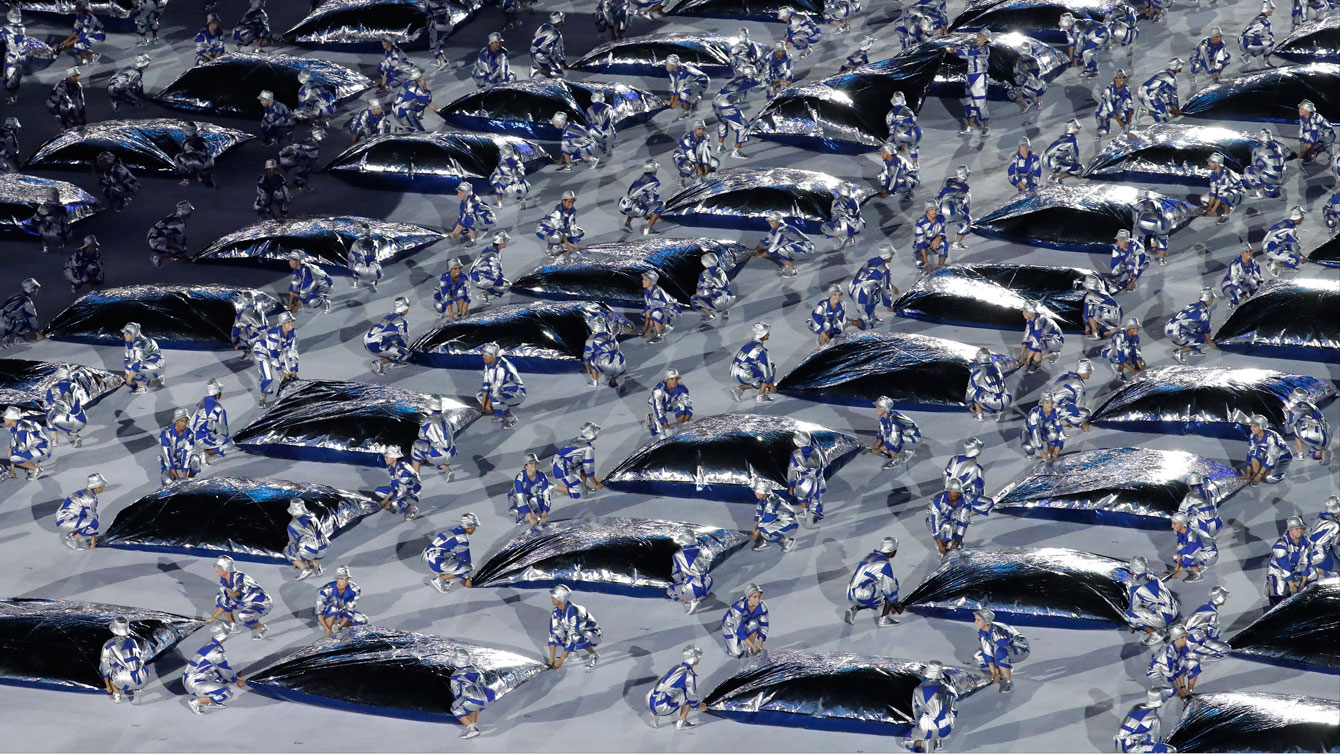
Dancers perform with foils during the Rio 2016 Opening Ceremony (AP Photo/Dmitri Lovetsky)
The Rio 2016 countdown included a reproduction of Athos Bulcao’s graphic pattern. A thousand silvery figures entered the stage carrying sheets of metallic paper. 10, 9, 8, 7, 6, 5, 4, 3, 2, 1…. and the party had started.
National anthem
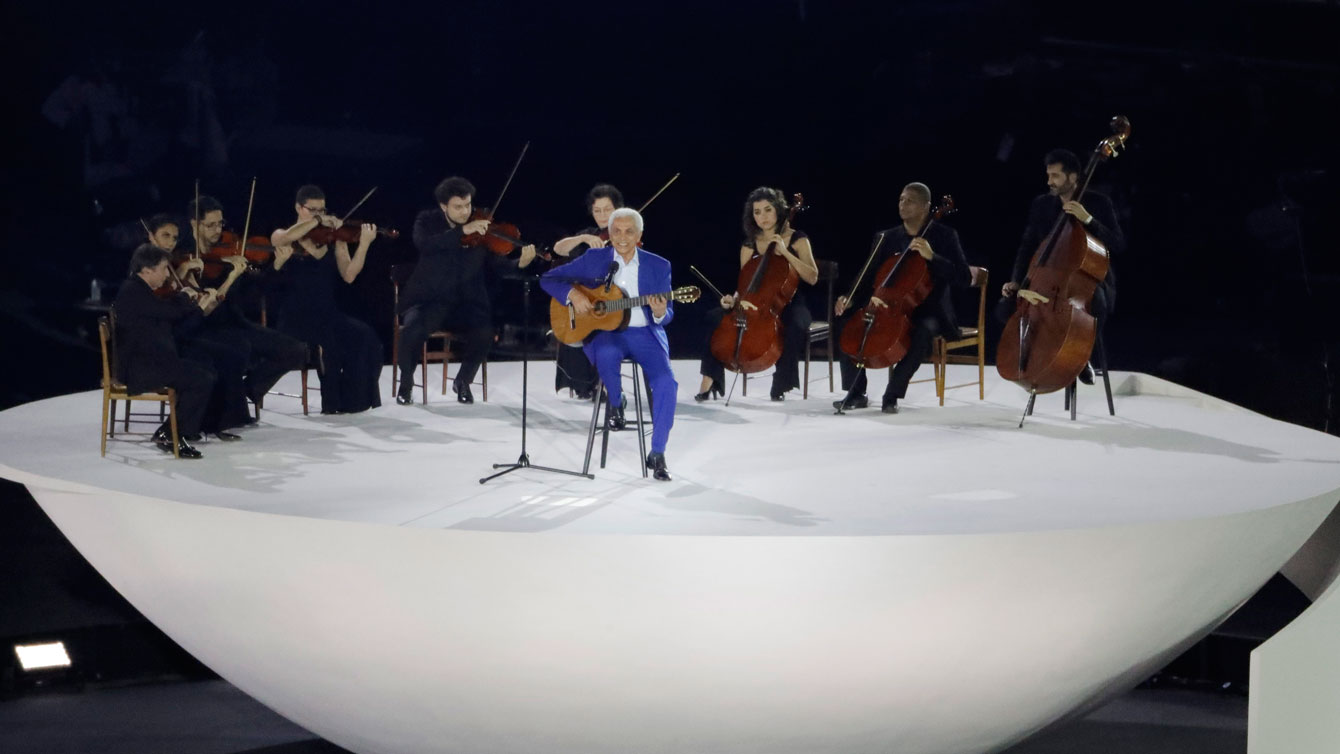
Paulinho da Viola sings Brazil’s national anthem at the Rio 2016 Opening Ceremony, Friday, Aug. 5, 2016. (AP Photo/Charlie Riedel)
A traditional and solemn moment of the Opening Ceremony, the national anthem was performed by one of the most recognized Brazilian sambistas, Paulinho da Viola, who was accompanied by a small string orchestra.
Birth of life, Brazil’s origin and ethnic mix
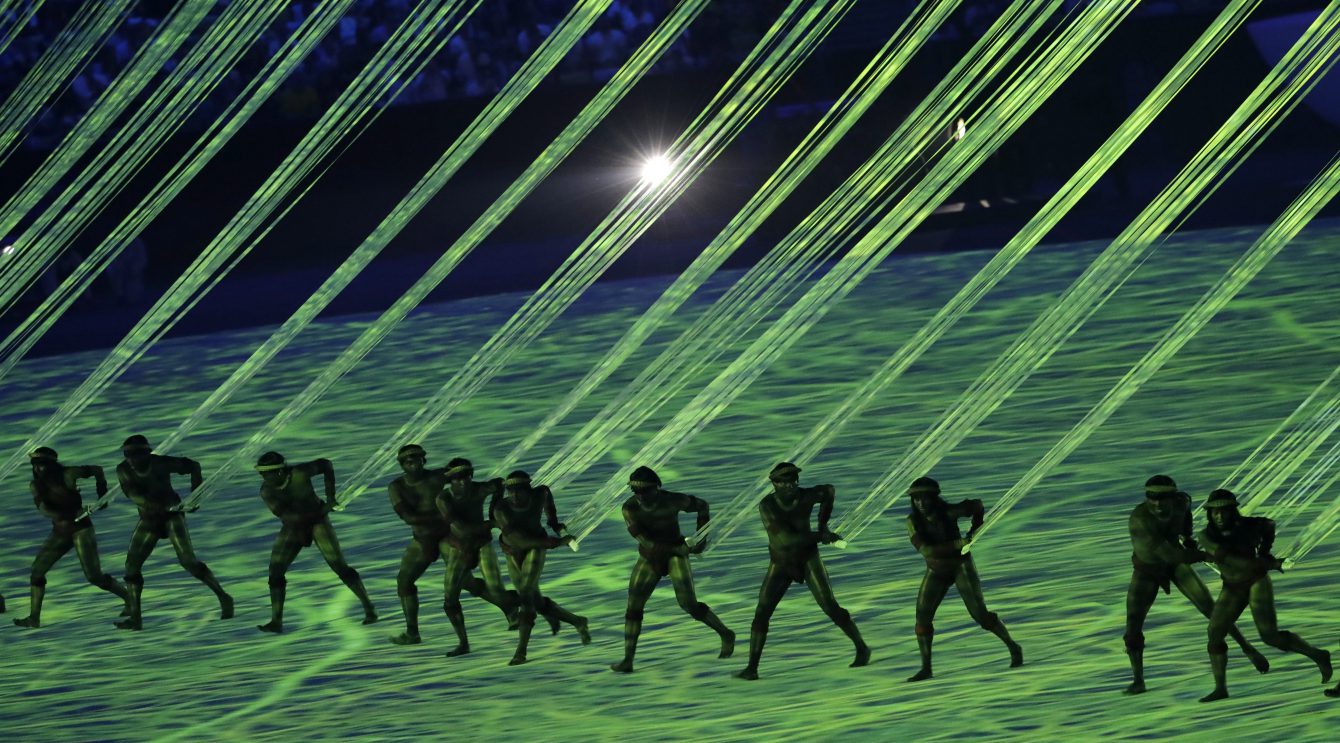
Artists perform during the Opening Ceremony for the 2016 Olympic Games in Rio de Janeiro, Brazil, Friday, Aug. 5, 2016. (AP Photo/Michael Sohn)
Spider-like creatures and yellow butterflies announced the birth of life. The humans’ arrival was represented by the indigenous people, which included 72 dancers from Parintins, where every year the folk groups Caprichoso and Garantido face off in an arena in the middle of the Amazon.
Brazil’s colonial past and the multiculturalism of the country were also highlights. The forest was replaced by sugarcane plantations, before a patchwork pattern formed beneath varied immigrants’ feet.
Modern Brazil
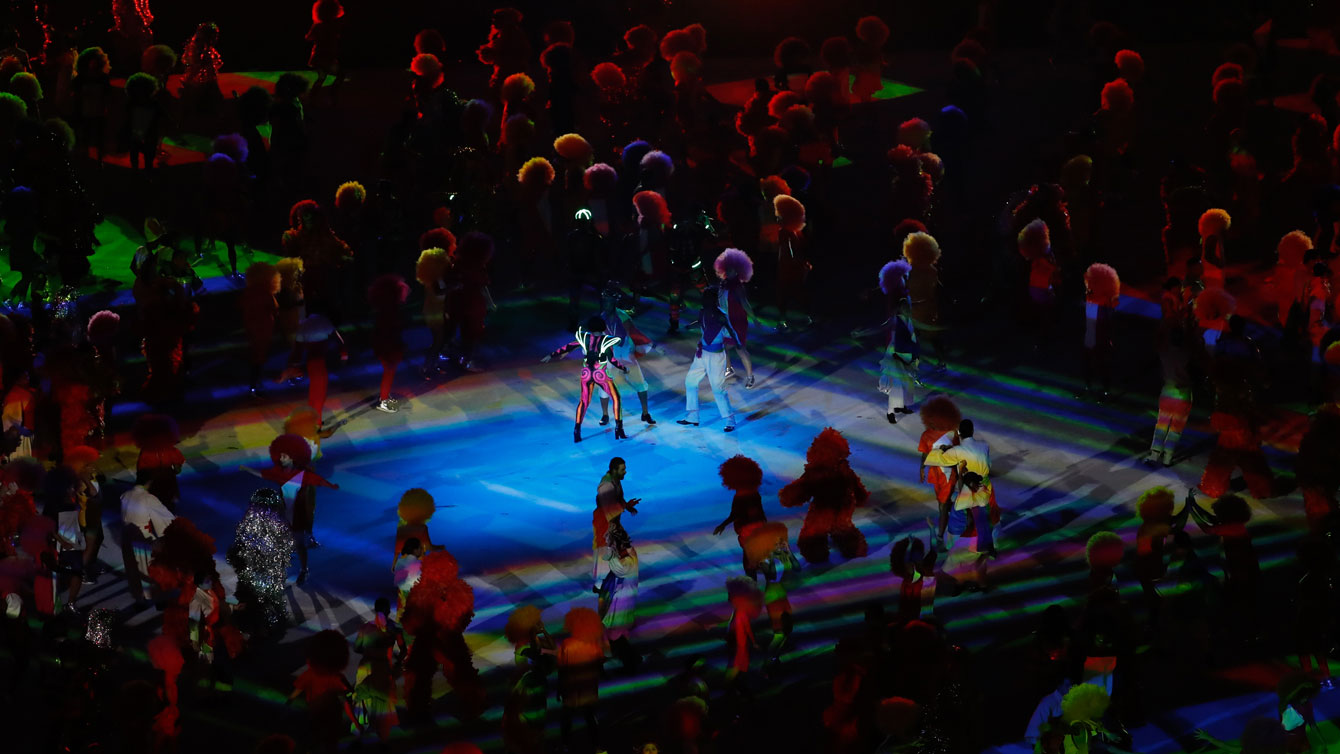
Photo: Mark Blinch
The vegetation gave way to a metropolis. While inside the stadium it was possible to see that the performers were just running across the floor, the spectators who were following the Opening Ceremony on television saw them springing from one high rise building to the next, via a 3D projection. The cityscape was comprised of 73 stacked boxes that also functioned as miniature stages.
Flight over Rio

14-bis flies over Maracana Stadium at the Rio 2016 Opening Ceremony (AP Photo/Matt Dunham)
The history of the “father of aviation,” Brazilian pioneer Alberto Santos-Dumont and his main creation, the biplane 14-bis, was another remarkable chapter of the night. To the sound of “Samba do Avião,” Santos-Dumont, in his iconic 14-bis, took a nighttime flight over the Marvelous City.
The Girl from Ipanema
RELATED: Who to watch for at Rio 2016 Opening Ceremony
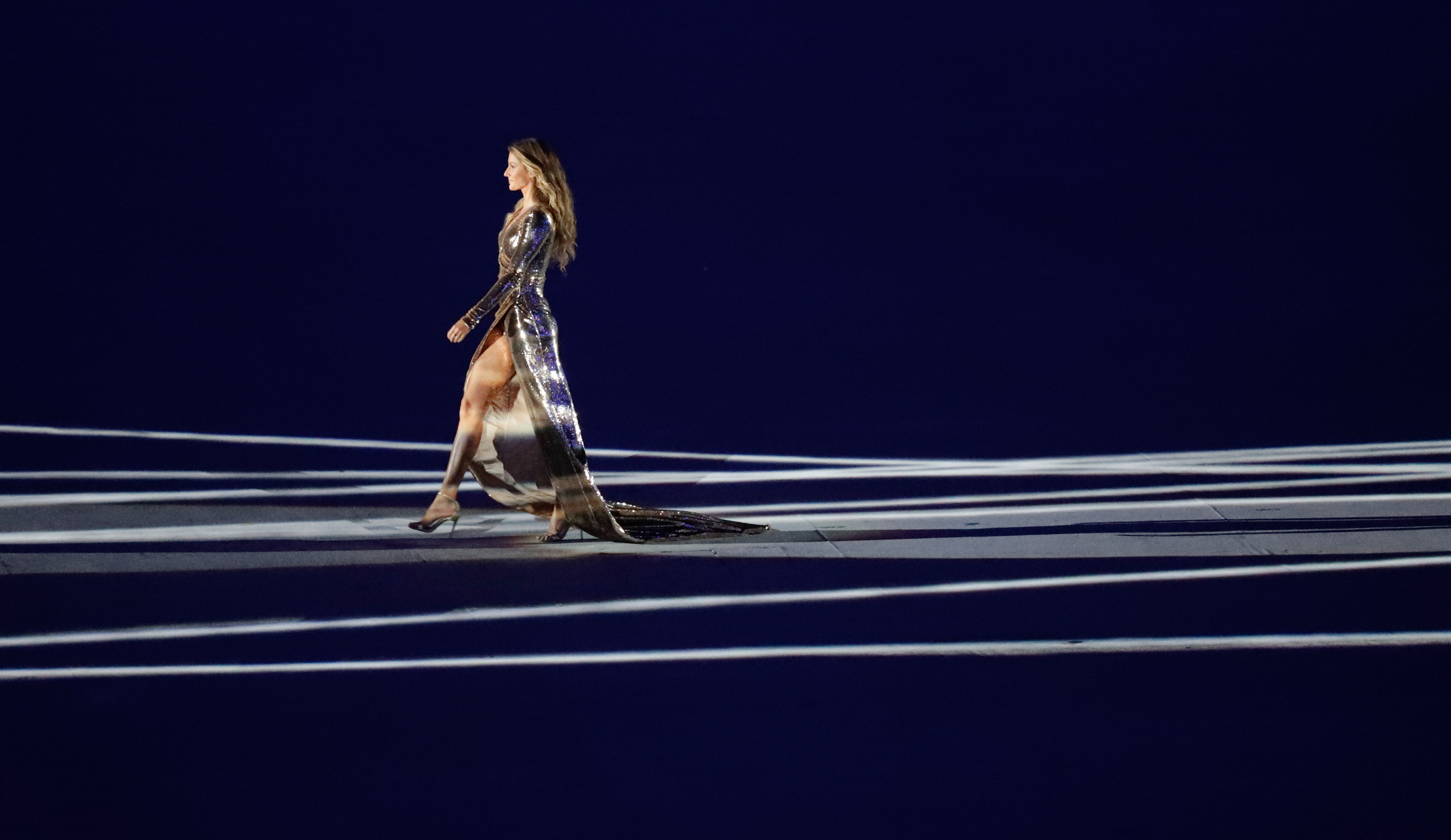
Gisele Bündchen walks at the Rio 2016 Opening Ceremony. Photo: Jason Ransom
In front of 60,000 people, the supermodel Gisele Bündchen reportedly made her last catwalk towards an image of the late, great musician Tom Jobim. Jobim’s grandson, Daniel, performed “Garota de Ipanema,” known worldwide as “The Girl from Ipanema” on a piano. As Gisele walked across the stage, she left a trail that formed Oscar Niemeyer’s iconic sketches.
Favela party

Favela party, Rio 2016 Opening Ceremony. Photo: Mark Blinch
Brazil’s favela culture was also a highlight at the Opening Ceremony. The segment started with funk star Ludmilla singing Rap da Felicidade (Happiness Rap) – one of the most important songs in Brazilian funk music history – over the Box City. The moment was followed by samba goddess Elza Soares, who performed “Canto de Ossanha.” Approximately 1500 dancers helped to promote the party on stage and thousands more did so in the stands. Other renowned artists, as Jorge Ben Jor, Zeca Pagodinho and Marcelo D2 enchanted the spectators.
Global warming
Each athlete receives a native #BRA seed to be planted in the #AthletesForest in #Deodoro after the #OpeningCeremony pic.twitter.com/39G5fcmAV1
— Rio 2016 (@Rio2016) August 5, 2016
This segment started with a message about global warming, one of the most important issues in the world today. The famous poem “Flower and Nausea,” by Brazilian Carlos Drumond de Andrade, was narrated by Oscar-nominee Fernanda Montenegro in Brazilian Portuguese and Dame Judi Dench in English. Then, a big and thrilling reveal: each Rio 2016 athlete received a seed and a soil cartridge to plant a native tree of Brazil. There were 207 different species for each of the 207 delegations that marched in the Parade of Nations. Those 11,000 seeds will form the Athletes’ Forest in Deodoro – a big environmental legacy for the host city.
Parade of Nations
RELATED: First-ever Refugee team set to compete at Rio 2016
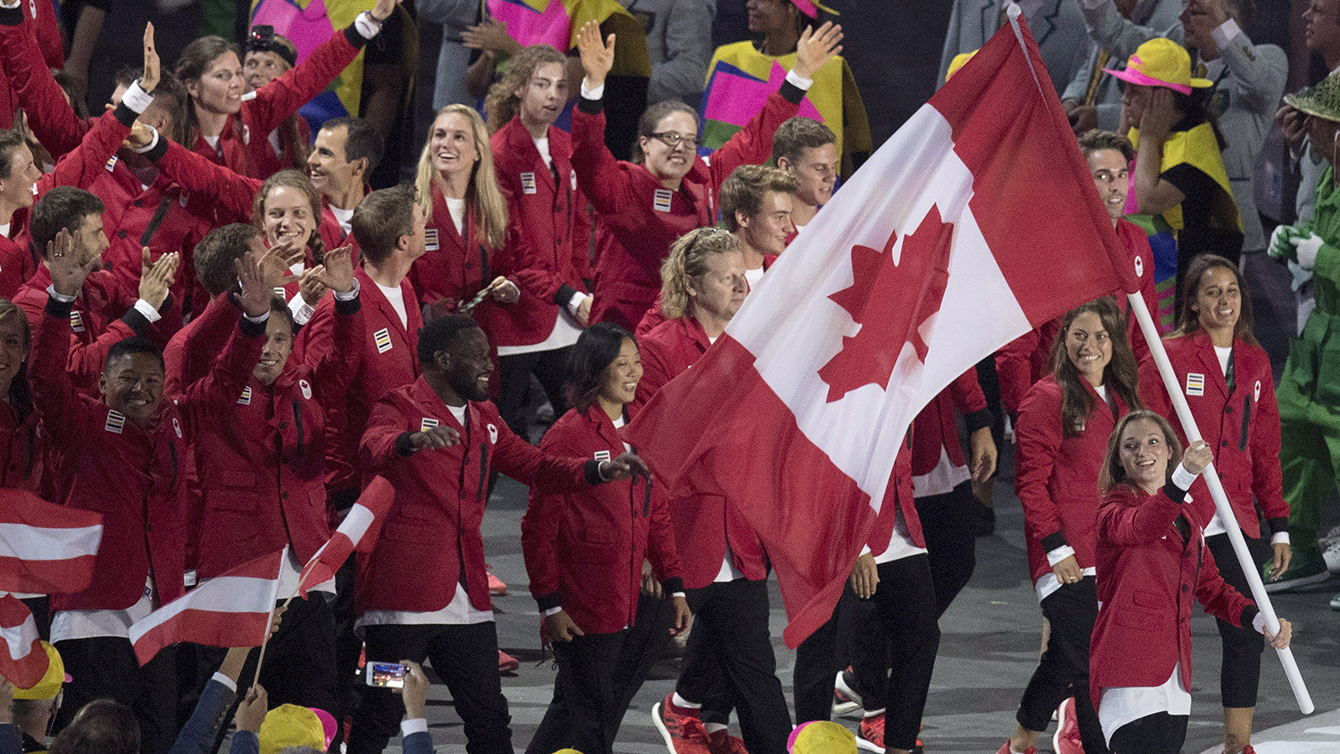
Rosie MacLennan leads Team Canada into the Opening Ceremony at Rio 2016
The traditional Parade of Nations is always a remarkable moment of the Opening Ceremony. At Rio 2016, 206 nations and – for the first time ever – a refugee team were welcomed to Brazil. Each nation was escorted by a colourful cyclist, who carried the name of the country. Five of them were transgender women, showcasing the inclusivity of Rio 2016.
RELATED: Team Canada athletes at the Rio 2016 Opening Ceremony
Team Canada was praised by spectators as Rosie MacLennan carried the Canadian flag. Wrapping up the parade, the host country Brazil entered the stage to the sound of the iconic “Aquarela do Brasil,” one of the most famous Brazilian songs, written by Ary Barroso in 1939.
Olympic rings
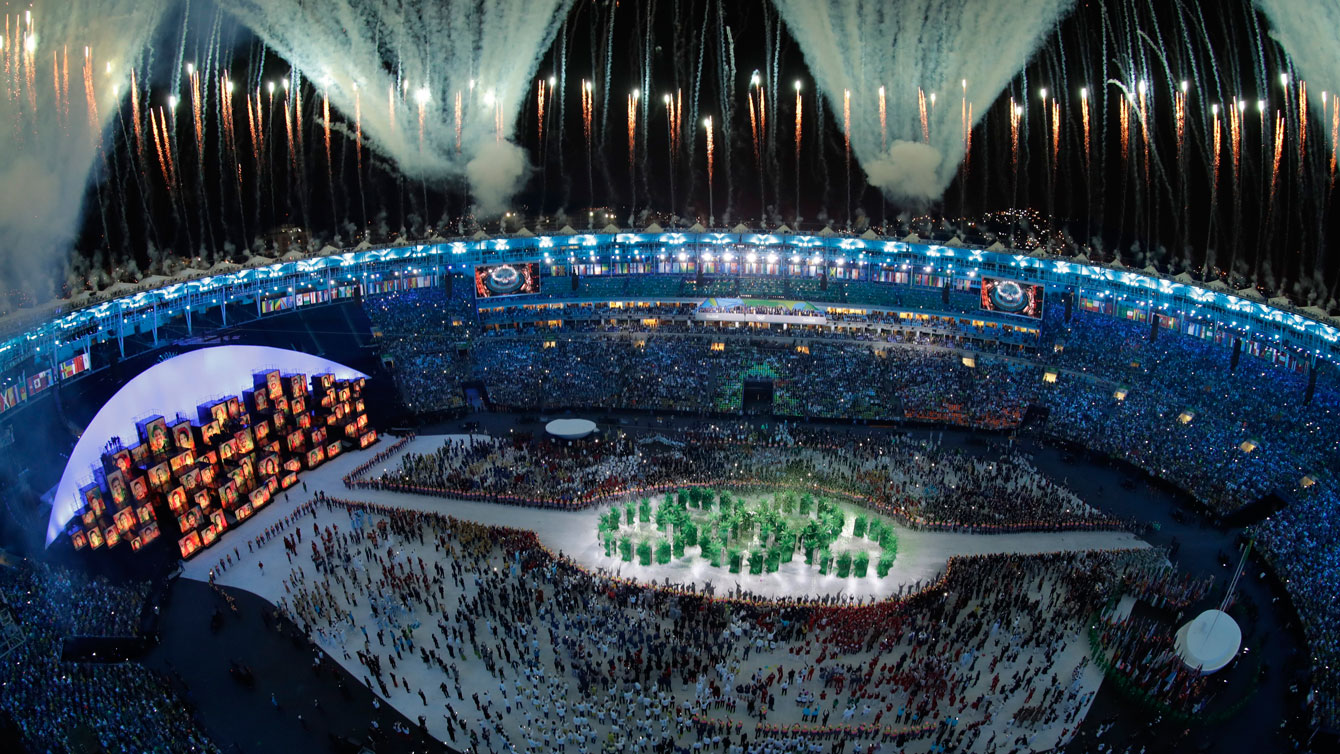
Fireworks are seen over Maracana Stadium during the Opening Ceremony at the 2016 Olympic Games in Rio de Janeiro, Brazil, Friday, Aug. 5, 2016. (AP Photo/Morry Gash)
Also part of the sustainability concept, Rio 2016’s Olympic rings, made of trees, were revealed from inside the mirrored planters where the athletes placed their seeds. Besides reflecting Brazilian biodiversity, the single green colour also had the message of unison of countries and continents. Fireworks followed the Olympic rings disclosure.
Dove of peace
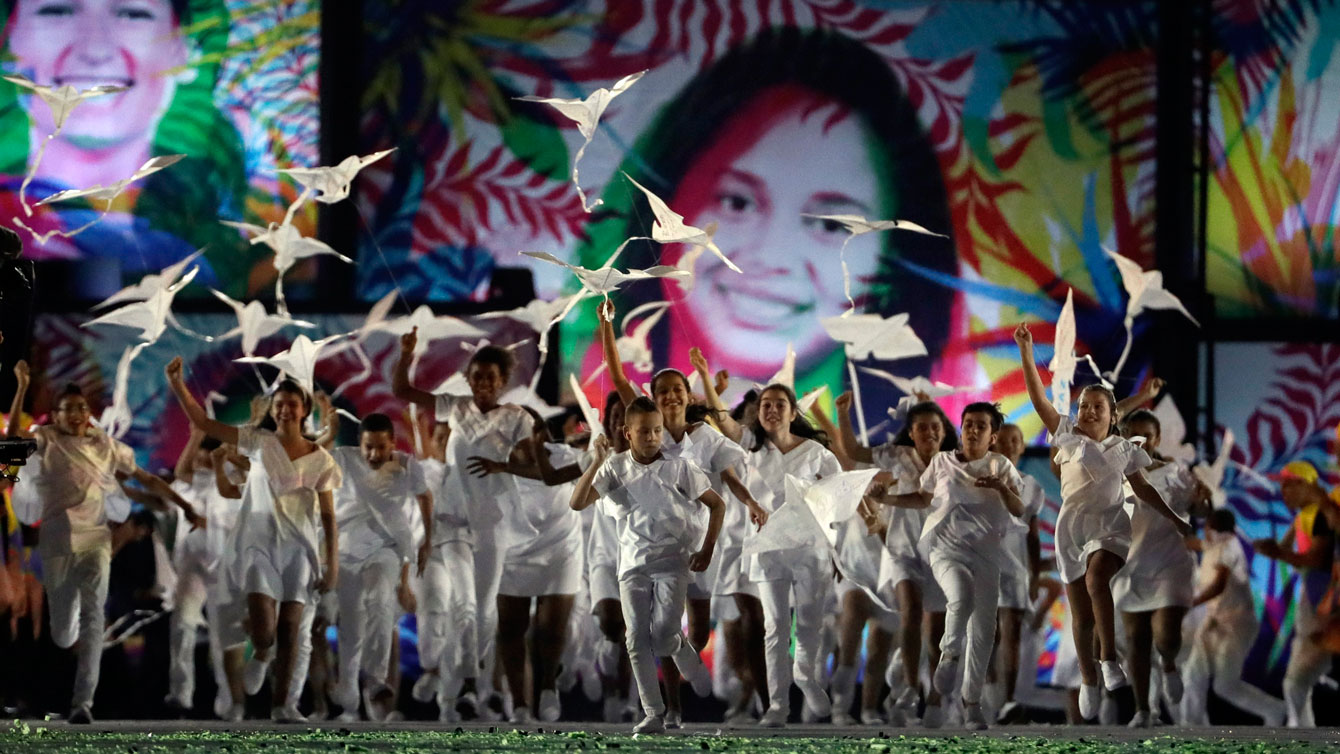
Children fly kites during the Opening Ceremony for the 2016 Olympic Games in Rio de Janeiro, Brazil, Friday, Aug. 5, 2016. (AP Photo/David J. Phillip)
Two hundred children ran into the stadium carrying kites, while thousands of paper doves fell from the sky. The kites had been brought from Brazil to Kenya, where children who played with kites for the first time, wrote messages on them, before sending them back for the ceremony. The messages reflected their hopes for a better and peaceful world in which to live.
Olympic Laurel
🎥 Kipchoge Keino #KEN receives the 1st Olympic Laurel award for contrib to Education & Olympic mvt. #OpeningCeremony pic.twitter.com/r12XkDskvC
— AthleticsAfrica (@athleticsafrica) August 6, 2016
The first Olympic Laurel, a new award to recognize notable contributions to the Olympic movement, was given to Kenyan Kipchoge Keino, chairman of the Kenyan Olympic Committee who is a former track and field athlete and two-time Olympic gold medallist. Keino has performed incredible work in his home country, housing, feeding and educating orphans.
Closing song

Artists perform on stage during the Opening Ceremony for the 2016 Olympic Games in Rio de Janeiro, Brazil, Saturday, Aug. 6, 2016. (AP Photo/David Goldman)
The closing song of the night, “Sandalia de Prata,” was performed by Caetano Veloso and Gilberto Gil, two of the most famous Brazilian artists. They teamed up with Carioca pop music singer Anitta. The drum sections from all 12 of Rio’s samba schools, a symbol of the Brazilian Carnival, played together for the first time in history.
Olympic flame
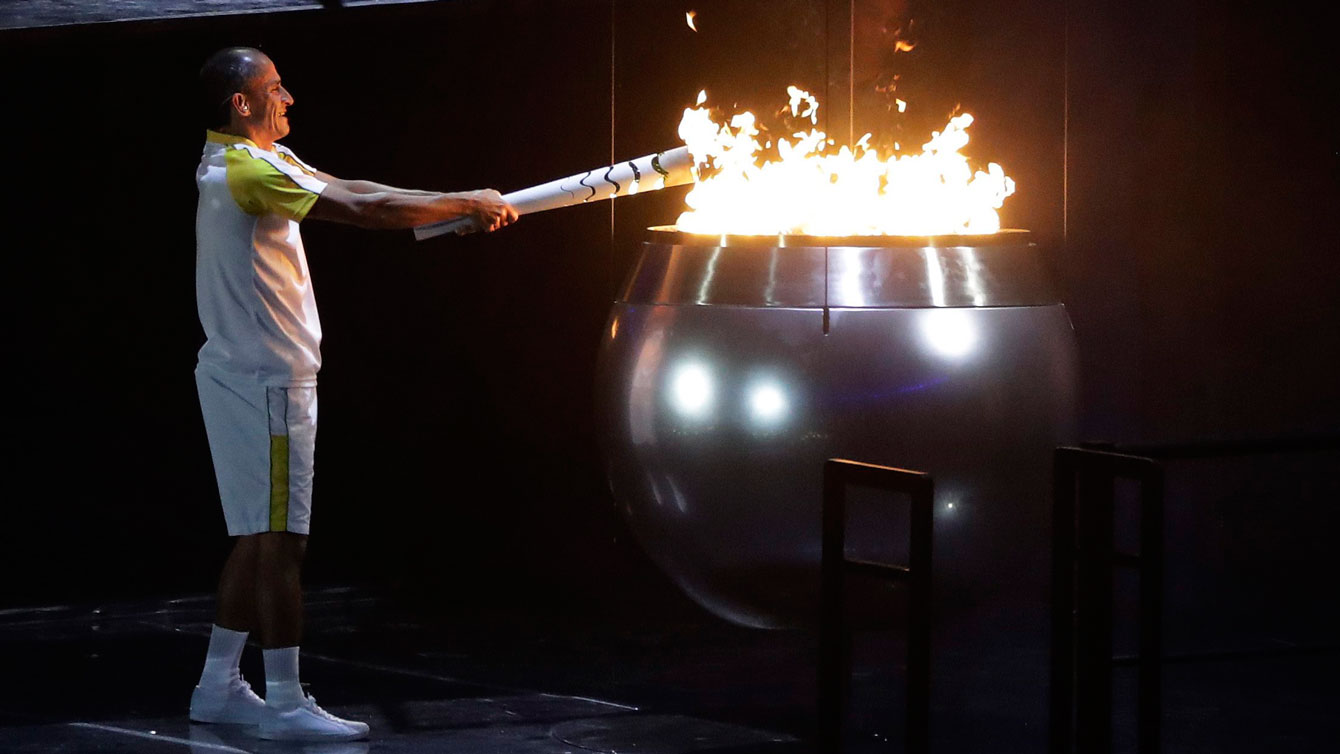
Vanderlei de Lima lights the Olympic flame during the Opening Ceremony for Rio 2016, Brazil, Friday, Aug. 5, 2016. (AP Photo/Jae C. Hong)
After travelling 26,000 kilometres around Brazil, the Olympic flame arrived at Maracanã with tennis legend Gustavo Kuerten. He passed it to Olympic basketball silver medallist Hortência, who then handed the flame to Vanderlei de Lima, who lit the cauldron. An Athens 2004 bronze medallist, de Lima received international attention after a spectator attacked him while he was leading the Olympic marathon. For his grace in the situation, de Lima was awarded the Pierre de Coubertin medal for sportsmanship. The Olympic cauldron is powered by wind and will remain lit with a small flame until the end of the Games.


